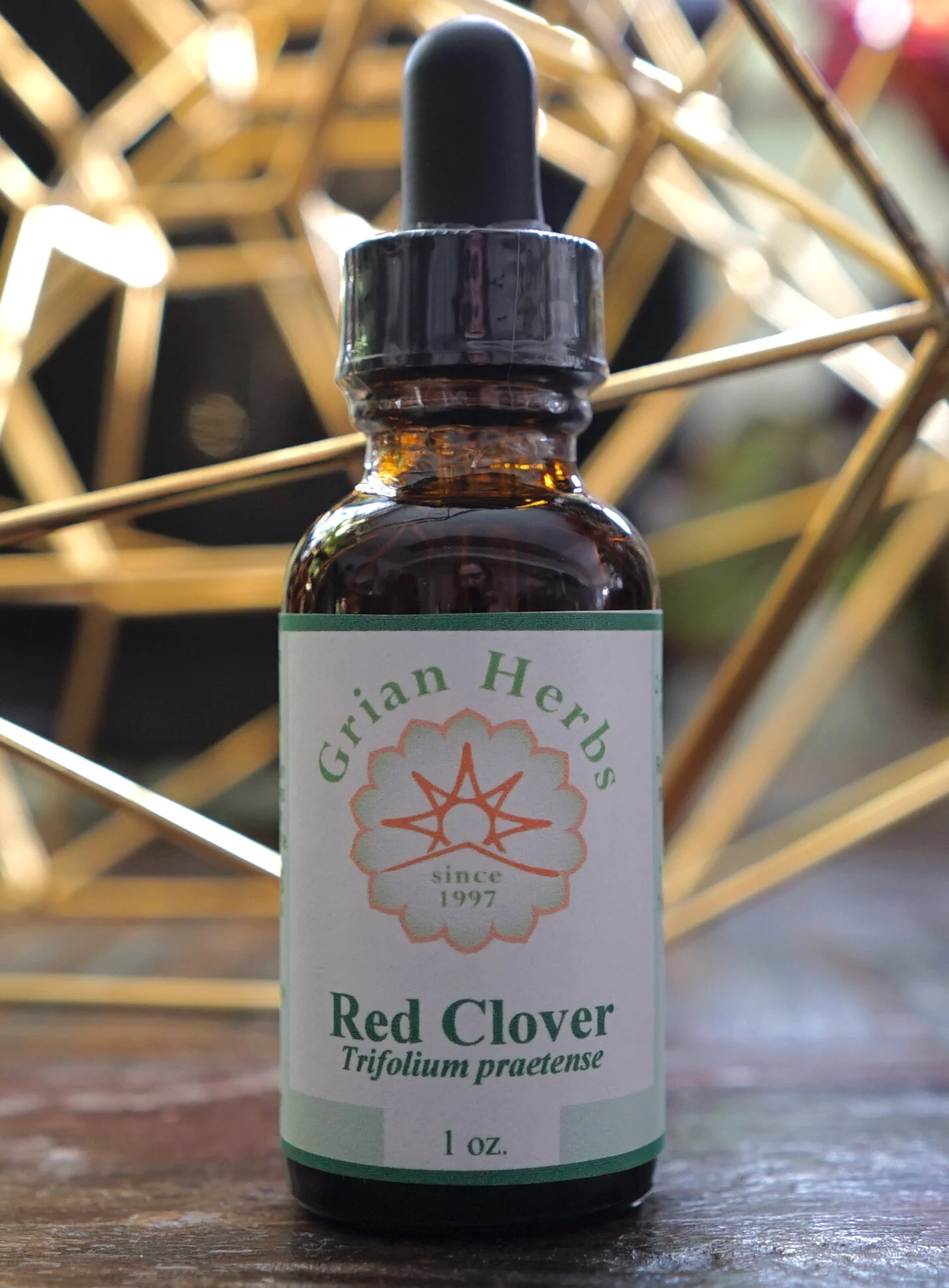Red Clover (Trifolium Praetense)
Red Clover (Trifolium Praetense)
Red Clover is a member of the Leguminosae, the Pea familiy. We use the flowers and top leaves for medicine, usually collected at the first flowering which happens in June. If it is mowed down, Red Clover will often set another flower crop – but these are not quite as vibrant as the first are. This herb is often used as a cover-crop, but it exists in symbiosis with Rhyzobium bacteria, and has a hard time establishing itself thickly if this bacterium isn’t artificially introduced. I encourage it in the fields around the garden, but find that it doesn’t really require extra fertility, and likes to keep its natural growth habits.
Elemental Associations: Air
Phytochemistry: Glycosides, flavonoids and isoflavones, coumarins (D. Hoffmann)
Actions: Alterative, lymphatic, expectorant, anti-catarrhal
Specific systems: Lymphatic, upper respiratory, female reproductive
Red Clover is a joyous remedy, giving us some of the first wild color in the fields. It is a very gentle remedy, but nonetheless very powerful: as with any good herb, it takes its time to effect lasting change. It is perhaps the best embodiment of an ‘alterative’, that class of herbs prized for gently cleansing the system and promoting a nourishing re-growth: and remarkably, Red Clover possesses both of these virtues in abundance.
If the lymph glands are constantly swollen during even a minor cold or flu, consider adding a tonic tea of this herb to a recovery regimen. It is specifically effective for post-nasal drip when accompanied with lymphatic stagnation, or when there is coughing as a result. The tea also makes a great drying beverage for the nasal congestion that comes with a cold or flu.
For women, it can help relieve painful cramping when taken daily with herbs such as Red Raspberry and Burdock. The gentle cleansing and toning action of these plants serves to ensure a smooth buildup of the uterine lining, lessening the buildup of toxins that cause the resultant cramping and heavy menstruation.
Indications: Lymphatic congestion, post-nasal drip with cough, heavy painful menstruation, skin conditions, cancer
Contra-indications: Isoflavone content may interact with hormonal medicines (birth control, HRT). When fermented, coumarins convert to coumadins, which can thin the blood considerably: therefore, use caution administering Red Clover with anticoagulants, or if there is hemophilia, unless you are certain it was properly harvested, dried and stored.
Preparations/Dosage: The infusion of the dried flower tops is traditional. Use 4 TBS per Quart of water, and steep covered for as long as possible (ideally overnight). A tincture can be prepared from the barely-wilted flowers, 30%, 1:3 to 1:5. Take ½ to 2 tsp. 3 times a day
Size: 1 fl oz

